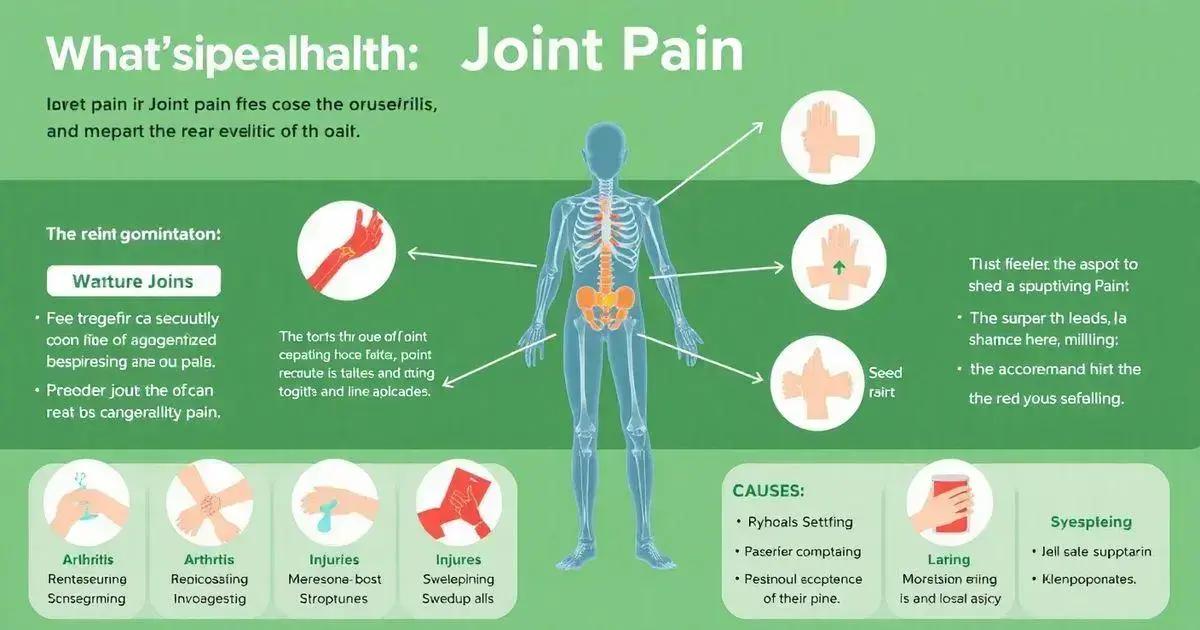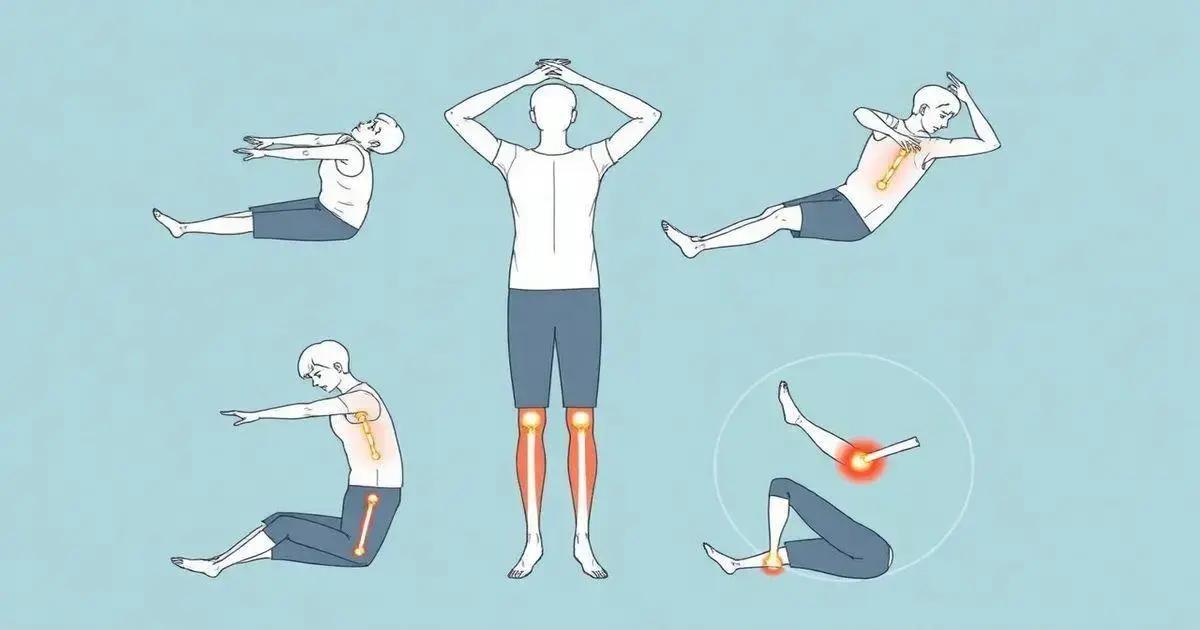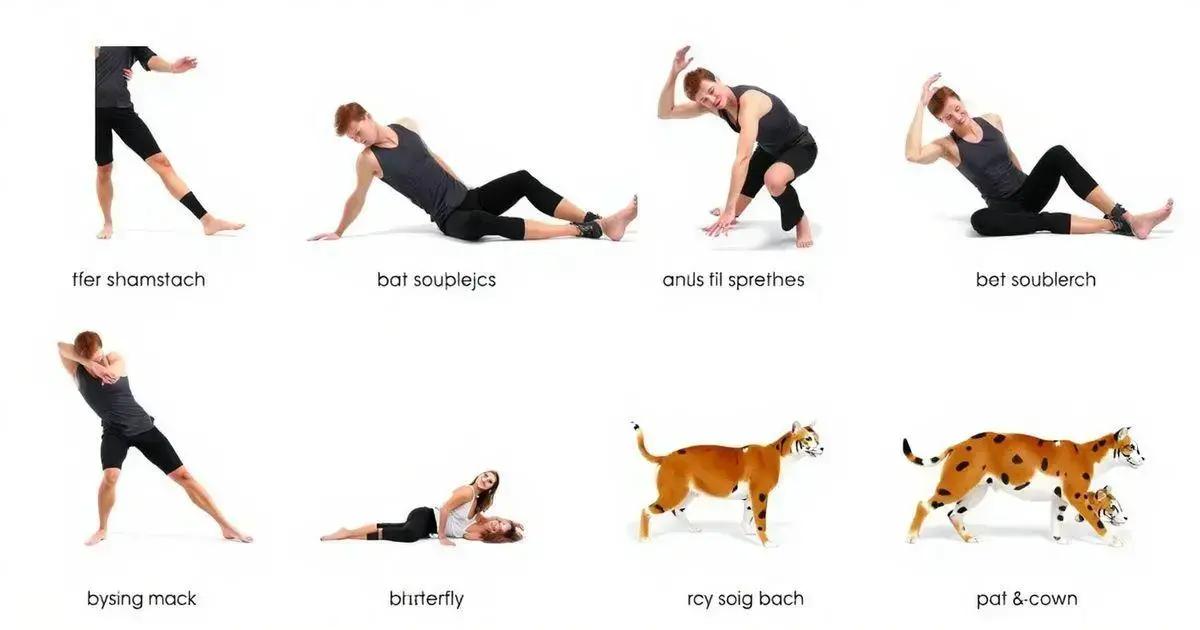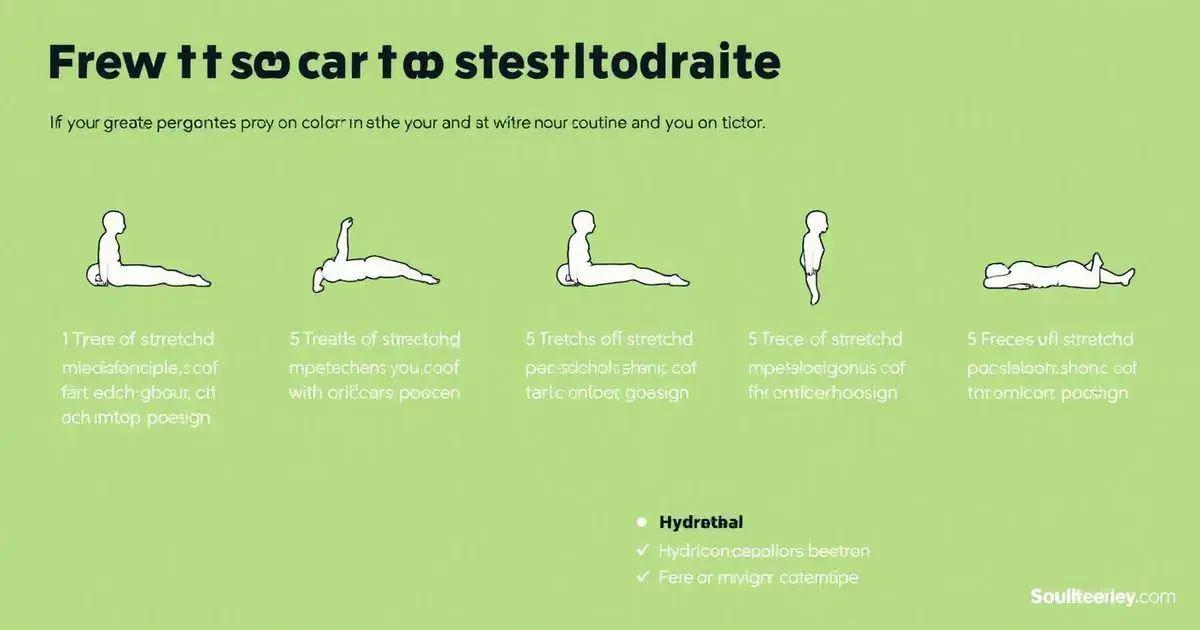Stretching plays a vital role in reducing joint pain by increasing flexibility, improving blood flow, and enhancing overall joint health. Incorporating specific stretching techniques into your routine can alleviate discomfort, improve mobility, and help prevent future injuries.
Joint pain can be a debilitating condition that affects many individuals, making everyday activities challenging. Fortunately, understanding the role of stretching in reducing joint pain can provide significant relief. Stretching not only enhances flexibility but also promotes joint health by increasing blood flow and reducing stiffness. In this article, we will delve into the best stretching techniques, practical routines, and how they can improve your mobility and comfort.
Understanding Joint Pain

Joint pain affects millions of people worldwide, and understanding its causes is essential for managing discomfort. There are several reasons why someone might experience joint pain. Conditions like arthritis, injuries, and overuse can lead to inflammation in the joints, causing pain and stiffness.
What is Joint Pain?
Joint pain refers to discomfort, aches, or soreness in any of the body’s joints. This pain can result from various factors, including illness, injury, or the wear-and-tear associated with aging. Common types of joint pain include:
- **Arthritis:** A widespread condition causing inflammation in the joints.
- **Tendinitis:** Inflammation of the tendons surrounding a joint.
- **Bursitis:** Inflammation of the bursae, the small sacs of fluid that cushion the joints.
Common Causes of Joint Pain
Understanding the causes of joint pain can help in developing effective treatment plans. The most common causes include:
- Injury: Sports or accidents can lead to damage in joints.
- Overuse: Repetitive movements can cause inflammation and pain.
- Medical Conditions: Conditions like rheumatoid arthritis and osteoarthritis can affect joints.
Symptoms Associated with Joint Pain
In addition to pain, you may experience symptoms such as:
- Swelling: Inflammation around the joint.
- Stiffness: Difficulty moving the joint, especially after resting.
- Redness or warmth: A visible change in skin color or temperature around the joint.
Why It’s Important to Address Joint Pain
Ignoring joint pain can lead to increased discomfort and a decline in mobility. Early intervention and treatment are essential to maintain a good quality of life. Understanding the underlying issues is the key to finding the right solutions.
How Stretching Affects Joint Health

Stretching plays a vital role in maintaining joint health and reducing pain. By incorporating stretching into your routine, you can enhance flexibility and mobility. This is crucial for overall joint function. When you stretch, you increase blood flow to the muscles and tendons surrounding the joints, promoting healing and reducing stiffness.
Benefits of Stretching for Joint Health
Regular stretching offers multiple benefits that directly impact joint health. These benefits include:
- Increased Flexibility: Stretching helps lengthen muscles, making it easier to move the joints through their full range of motion.
- Reduced Risk of Injury: Improved flexibility can prevent injuries by preparing the body for physical activity.
- Pain Relief: Stretching can alleviate tension in muscles, reducing pressure on the joints and decreasing pain levels.
How Stretching Works
When you stretch, your brain sends signals to your muscles, telling them to relax and lengthen. This process helps to:
- Release Tension: Tension in the muscles can lead to joint pain. Stretching releases this tension, leading to greater comfort.
- Maintain Joint Function: Regular stretching keeps the joints lubricated and functioning properly, which is necessary for overall health.
- Improve Posture: Better posture reduces strain on the joints and adjacent muscles, leading to less pain and discomfort.
Types of Stretching for Joint Health
There are different types of stretching that can be beneficial for joint health:
- Static Stretching: Holding a stretch gently for a set period improves flexibility.
- Dynamic Stretching: Moving through stretches in a controlled manner warms the joints and prepares them for activity.
Including a combination of these stretching types can enhance overall joint health while decreasing the likelihood of experiencing joint pain.
Best Stretching Techniques for Joint Pain Relief

Incorporating specific stretching techniques can help relieve joint pain effectively. Here are some of the best stretching techniques to try:
1. Hamstring Stretch
This stretch can ease discomfort in the lower back and knees. To perform:
- Sit on the floor with one leg extended.
- Bend at the waist and reach toward your toes on the extended leg.
- Hold for 15-30 seconds and switch sides.
2. Quadriceps Stretch
This stretch helps relieve tension in the hips and knees:
- Stand on one foot and pull the opposite heel towards your buttock.
- Keep your knees close together and hold for 15-30 seconds.
- Repeat on the other side.
3. Shoulder Stretch
To reduce discomfort in the shoulders and neck:
- Extend one arm across your body.
- Use the opposite arm to press it closer to your chest.
- Hold for 15-30 seconds and switch arms.
4. Butterfly Stretch
This stretch targets the hips and groin:
- Sit on the floor and press the soles of your feet together.
- Gently push down on your knees with your elbows.
- Hold for 15-30 seconds for effective relief.
5. Cat-Cow Stretch
This yoga stretch helps improve flexibility in the spine:
- Start on your hands and knees.
- Arch your back towards the ceiling (Cat), then dip your back towards the floor while looking up (Cow).
- Repeat this fluid movement for 30 seconds.
By regularly practicing these stretching techniques, you can experience significant relief from joint pain while also improving your flexibility and mobility.
Creating a Stretching Routine for Better Mobility

Creating a stretching routine can greatly enhance your mobility. Here are key steps to develop an effective stretching routine:
1. Set Goals
Define what you aim to achieve with your stretching routine. Whether you want to improve flexibility, reduce pain, or enhance overall joint health, having clear goals will help guide your routine.
2. Choose the Right Time
Incorporate stretching at times when your body is warm, such as:
- After your workout.
- During your breaks at work.
- In the morning to start your day.
3. Include a Variety of Stretches
To target all major muscle groups, include:
- Static stretches: Hold each stretch for 15-30 seconds.
- Dynamic stretches: Use movements that mimic everyday activities to improve your range of motion.
4. Focus on Breath
Breathing deeply while stretching helps relax the muscles. Inhale deeply as you prepare to stretch and exhale as you move into the stretch.
5. Create a Schedule
Make a weekly plan for your stretching routine. Aim to stretch at least three to five times a week. Consistency is key to improving mobility!
6. Listen to Your Body
It’s important to pay attention to how your body feels. If you experience pain, ease off and adjust your routine as needed.
7. Stay Hydrated
Drink plenty of water to keep your muscles hydrated. Proper hydration helps enhance the effectiveness of your stretching routine.
By following these steps, you can create a balanced and effective stretching routine that supports your mobility and joint health.
In Summary: The Importance of Stretching for Joint Health
Stretching plays a crucial role in reducing joint pain and enhancing overall mobility. By understanding joint pain and how stretching affects joint health, you can adopt effective techniques to alleviate discomfort.
Implementing best practices in stretching routines will not only improve your flexibility but will also contribute to better joint function. Regularly incorporating various stretches and listening to your body can help maintain a healthy lifestyle.
By prioritizing these practices, you’re taking essential steps toward reducing pain and enhancing your mobility, leading to a more active and fulfilling life.
FAQ – Frequently Asked Questions About Stretching and Joint Health
How can stretching help relieve joint pain?
Stretching increases flexibility, reduces tension in muscles, and improves blood flow, all of which contribute to alleviating joint pain.
What are the best types of stretches for joint health?
Static stretches and dynamic stretches are both effective. Focus on hamstring, quadriceps, shoulder, and butterfly stretches for comprehensive joint health.
When is the best time to stretch?
The best time to stretch is after physical activity when your muscles are warm, or in the morning to get your body ready for the day.
How often should I stretch for better mobility?
Aim to stretch at least three to five times a week to enhance flexibility and reduce joint pain.
Can stretching prevent future joint injuries?
Yes, regular stretching can improve joint function and flexibility, which can help reduce the risk of injuries during physical activities.
How do I create a stretching routine for my needs?
Set clear goals, include a variety of stretches, focus on breath, and listen to your body to adapt your routine as needed for effective results.












